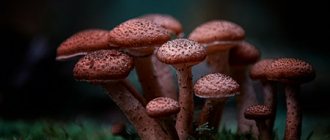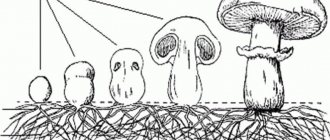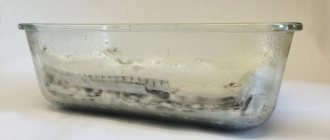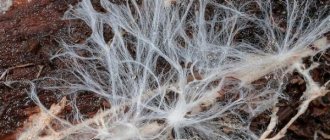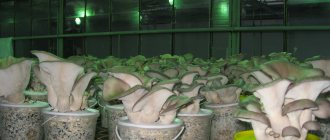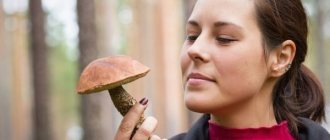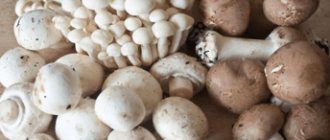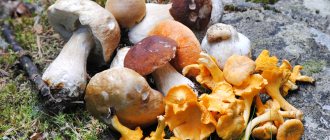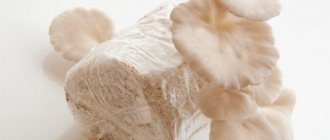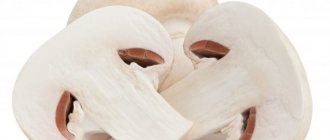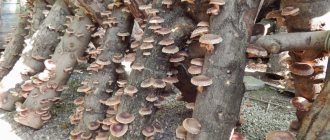Golden Teacher Mushroom Effect
The decoction of the strain has a mild effect on the traveler. As if surrounded by care and love, magical guides will unobtrusively lead the wanderer to the door separating the spiritual and material worlds. They will gently push the indecisive traveler over the line and allow him to enjoy the wondrous images and growing euphoria in all its glory. The dance of intertwining patterns will not allow you to get bored, and answers and spiritual insights coming from all sides will give you confidence that everything is being done correctly. The feeling of melting and blurring of boundaries along with the upward flow of fiery heat will make it possible to feel free from the dirt of ignorance and false beliefs. By maintaining equanimity, the psychonaut will be able to bring this state into his reality, forever changing his life for the better.
The spore prints of Golden Teacher psilocybin mushrooms presented on the website are a unique opportunity to grow real magic mushrooms at home.
FAQ on cultivating Magic Mushrooms. Part 1
t.me/entheolib
A COMMON PART.
Where should you start?
Having studied various techniques, you will be able to get a general idea of cultivating Magic Mushroom at home, and you will understand that no matter how different the cultivation methods may be, the meaning is the same and boils down to the following:
- 1. Preparation of inoculation material (spores, mycelium).
- 2. Preparation of the substrate.
- 3. Inoculation of the substrate.
- 4. Colonization of the substrate with mycelium.
- 5. Stimulation of fruiting.
- 6. Harvest.
- 7. Harvest storage
- 8. Preparation of inoculation material.
Now let's look at each point in more detail.
1. Preparation of inoculation material (Spores, Mycelium).
If you are going to grow MM for the first time, you will have to buy spores or mycelium. This can be done in many places on the Internet. There is no point in ordering mycelium, because... problems may arise with it at customs, and no one needs this, so we will dwell in more detail on ordering a dispute.
P. Cubensis spores , because... they are the easiest to grow. Then, when you gain enough experience, you can try your hand at some other mushrooms, such as P. mexicana , or P. tampanensis .
Which variety (Cambogian, Ecuador, B+, Matias Romero, Fat Stem, Golden Teacher, etc.) to choose from the commercially available spores does not make much difference, because in terms of cultivation, they are almost identical.
Spores are sold in the form of a print, and in the form of an already prepared sterile syringe with a spore suspension
Let's look at the pros and cons. Imprint.
The print is a piece of cardboard or thick paper, approximately 50x50 mm in size, with a dark purple stain applied to it - spores, sterilely sealed in a ziplock bag.
- Pros : The spore print can be stored for up to several years, which makes it indispensable for long-term storage. The fingerprint is sent in a regular letter, which also reduces the risk associated with detection at customs.
If you use the print to inoculate a Petri dish with a nutrient medium, then it will last for many, many times, because... For inoculation, it is enough to scrape off a very small amount of spores.
- Cons : All work carried out with the print requires a sterile environment and can only be carried out by experienced users. Otherwise, there is a very high risk of infection, both of the substrate and of the print itself.
Syringe with spore suspension. A syringe with a spore suspension is a regular disposable 10 ml syringe filled with water with spores suspended in it. The water may look slightly cloudy, with small “clouds” of white mycelium and individual dark-colored dots called spores. The water does not have any purple tint; this only happens if there are a LOT of spores in the syringe, and they have not yet had time to germinate.
- Pros : The main advantage of the syringe is its tightness. Inoculation with a syringe does not require preliminary sterilization of the room and special handling skills. Therefore, any person who picks up a syringe for the first time will successfully cope with the task assigned to him.
- Cons : The syringe is sent either in a “bulky” letter (some of the spores may simply leak out along the way) or in a special package, which can cause unhealthy interest among customs officers. It is not recommended to order syringes in winter, because... the water may freeze and some of the spores may die. Since the syringe is limited to 10 ml, and a minimum of 2 ml is required to inoculate anything, it is not difficult to calculate that such a syringe will be enough for 5, maximum 10 “injections”.
Also, spores suspended in water have an extremely short shelf life - 1-2 months (the syringe with spores should be stored in the refrigerator, in the door - at 2-4C). Subtract from this period two weeks for delivery + a week or two while they were lying in the supplier’s warehouse before being shipped.
Conclusions : A print is better than a syringe. But if you are a beginner, it is still advisable for you to order a syringe, precisely because of its ease of use. Based on all of the above, it would be logical to immediately (!) begin propagating the mycelium immediately after receiving a syringe with spores.
Since the main role in the nutrition of mushrooms is played by compounds containing carbon - the main source of energy, and the most accessible sources of carbon nutrition are simple sugars in the form of glucose, fructose, xylose and maltose - this method can be called universal for any type of mushrooms we cultivate. Any other of the above sugars can be used as a replacement for fructose. You can also use ordinary honey as a replacement for fructose.
Let's look at the pros and cons.
Honey _ You can use absolutely any honey and in any consistency (even candied).
- Pros : Mycelium grows faster on honey, in greater quantities and is denser than on fructose.
- Cons : There are different types of honey: linden, buckwheat, flower, etc., depending on this, the mycelium can grow differently. Honey is inconvenient to dose, i.e. it is difficult to determine the concentration of the solution. The honey solution sometimes turns out to be cloudy, and this makes it difficult to detect mycelium in the solution in the early stages of its development. Honey solution always has a yellowish tint. Therefore, it can be difficult to determine the color of the mycelium, which can be important when identifying an infection.
Fructose . Fructose is sold in the diabetic food section of large supermarkets and in specialized stores for diabetics.
- Pros : Fructose, as a rule, is sold the same everywhere, only the packaging is different. Fructose is easy to dose using precise scales, which means you can always achieve the required solution concentration. The fructose solution always turns out to be absolutely transparent, which makes it easier to detect mycelium in it at the early stages of development. Also, in a transparent solution it is easy to determine the color of the mycelium. The fact that in a fructose solution, the mycelium grows more “liquid” makes it easier to absorb through a thin needle, which in the future will be more convenient for inoculation than with a thicker needle, into which mycelium grown in a honey solution has to be sucked.
- Cons : It may not be possible to find fructose on sale where you live.
Conclusions : If your goal is to propagate mycelium to inoculate the substrate, and not to grow mycelium in large volumes to extract alkaloids from it, then fructose is better than honey. If you can, use fructose.
PREPARATION OF SUBSTRATE.
Based on the type of nutrition and growth conditions, fungi are divided into three main groups: saprotrophs (fungi that feed on organic remains), wood-destroying fungi - xylotrophs, and mycorrhizal fungi (fungi whose mycelium enters into symbiosis with the roots of a certain type of plant).
The mushrooms we cultivate (P. cubensis), as well as the majority of MM, are saprotrophs.
Saprotrophs are fungi whose mycelium spreads in the humus layer of the soil. Such mushrooms grow on well-fertilized soils and on plant debris. Agricultural waste, straw, hay, as well as various types of grain and cereal crops are used as a nutrient substrate for their cultivation.
wheat are mainly used . But you can also successfully use barley, millet, buckwheat, oatmeal, various grain mixtures (for example, bird feed), etc. The only condition is that the grain should not be chemically treated (seed grain is sometimes treated with fungicides); fungal mycelium will not be able to grow on such grain.
To prepare the substrate and give the components the necessary properties, grain and straw are subjected to certain processing. The grain is pre-boiled and then sterilized. Hay and straw are first crushed, then moistened, and finally sterilized (or pasteurization is carried out instead of sterilization).
Substrate moisture is important for the development of fungi. When the substrate humidity is higher than optimal, the spread of mycelium in it is hampered due to the lack of sufficient air and the development of anaerobic bacteria. At low humidity, the growth processes of fungi are weakened, and the mycelium develops extremely slowly.
Heat treatment – sterilization or pasteurization of the substrate, is carried out to destroy foreign microorganisms.
What is better to use, what substrate to prefer?
Here is a brief description of some of the most commonly used components for preparing the substrate.
- RYE.
Rye absorbs and retains moisture well (after cooking, the volume of grain increases approximately three times). The rye substrate is rich in nutrients, and mushrooms grow on it in large quantities. Rye is sold in diabetic food stores - for sprouting, as well as for preparing various dishes (in bags of 200-250 g, price 10-15 rubles). In gardening stores - as seed (kilogram packages, price 18-25 rubles) And in rural stores, as poultry feed (by weight, 1 kg - 4-8 rubles)
To prepare the rye substrate, simply boil the rye until tender (about 30 minutes).
- WHEAT.
Wheat is less susceptible to bacterial contamination than rye. It boils well, absorbs and retains moisture. The finished grain does not stick together and turns out crumbly. This improves the air exchange of the substrate and promotes the rapid development of mycelium on it. Wheat, like rye, is rich in nutrients. Wheat is sold in diabetic food stores - for sprouting, as well as for preparing various dishes (in bags of 200-250 g, price 10-15 rubles). In gardening stores - as seed (kilogram packages, price 18-25 rubles) And in rural stores, as poultry feed (by weight, 1 kg - 4-8 rubles)
To prepare the wheat substrate, simply boil the wheat until tender (about 30 minutes).
- HAY.
Hay is less nutrient rich. Therefore, the substrate made from hay turns out to be relatively “poor”. This in turn prevents the formation and development of mold on it, and also significantly reduces the risk of bacterial infection. But for the same reason, MM mycelium on hay develops more slowly, and the yields are slightly less than for mushrooms grown on substrates richer in nutrients. Hay is sold in pet stores as bedding for rodents (costs about 15-30 rubles per bag). The hay must first be chopped (this can be done using ordinary scissors) and moistened (by soaking it in water for several hours).
- RICE.
Typically, brown or brown rice is used to prepare the substrate. Rice is rich in nutrients, cooks well, absorbs and retains moisture. But after heat treatment, rice, as a rule, sticks together, and this interferes with air circulation and makes it difficult for the mycelium to colonize tightly stuck together areas of the substrate. Excess moisture forms in the stuck together areas, which creates favorable conditions for the development of foreign microorganisms in them and quite often leads to contamination of the entire substrate. To prevent this from happening, the rice is crushed and mixed with vermiculite. Vermiculite added to rice prevents rice pieces from sticking together, improves air exchange, and also helps maintain optimal substrate moisture.
Rice is sold in grocery stores, supermarkets, wholesale markets, etc. and costs from 30 to 50 rubles per 1 kg.
Vermiculite is sold in gardening stores as a mineral supplement (price about 10 rubles per 1 liter).
Sterilization.
After preparation, the substrate must be sterilized.
- Sterilization in a pressure cooker.
In a pressure cooker, sterilization takes place under pressure, which provides ideal conditions for its implementation (temperature more than 100 C) and significantly reduces the sterilization time (30 minutes is enough).
A pressure cooker is sold in hardware stores and costs from 1,200 rubles. and higher. This is quite expensive, so not everyone can afford to buy a pressure cooker for sterilizing the substrate. But nevertheless, there is a way out. For these purposes, a second-hand pressure cooker is quite suitable. The price of a used pressure cooker is significantly lower (I bought it for 300 rubles, and the pressure cooker was completely new). Open any newspaper of private advertisements, for example, “From Hand to Hand” and look for advertisements for the sale of a used pressure cooker. You will definitely find something suitable, there are quite a lot of such advertisements.
When purchasing a pressure cooker, you must take into account its dimensions. It often happens that the pressure cooker is quite large in volume, but not sufficient in height to accommodate the containers with the substrate you are using.
When working with a pressure cooker, take the necessary precautions: Do not open the pressure cooker valve until steam has completely stopped coming out of it and the pressure in the pressure cooker has returned to normal. Boil over low heat, otherwise the pressure in the pressure cooker will be too high and steam will burst out in a stream, etc.
- Sterilization in a pan.
As a replacement for a pressure cooker, you can use an ordinary saucepan. It is necessary to place a rag or some other “stand” at the bottom of the pan so that the glass containers with the substrate do not burst during sterilization.
You need to pour water into the pan so that it covers the container with the substrate by about half.
Sterilization in a saucepan must be carried out over low heat (so that the water does not have time to boil away), with the lid closed, for 1-1.5 hours.
After sterilization is completed, it is not recommended to remove the lid from the pan or pressure cooker (not to mention removing containers with substrate from the pan or pressure cooker) until they have cooled completely. Otherwise, due to the difference in pressure, the containers will begin to draw in cold air, and this can subsequently lead to contamination of the substrate. Once the substrate has cooled, it is ready for inoculation.
Pasteurization.
Pasteurization is a long-term heat treatment of the substrate with steam, carried out at a certain temperature.
Substrate pasteurization is carried out in several ways; let’s consider one of them as an example.
After placing the substrate in containers, the substrate is subjected to steam treatment. Steam is supplied through a pipeline with holes, and its flow is controlled. First, a small amount of steam is introduced (to warm the substrate and prevent it from condensing on the surface of the substrate). Then the steam supply is increased, bringing the air temperature to 57-59 C. In this case, it is necessary to ensure air circulation to prevent the formation of zones with different temperatures (a deviation of no more than 1-2 C is allowed). At this temperature, the pasteurization process lasts 6-8 hours. After completing the pasteurization process, the steam supply is gradually reduced. It is quite difficult to pasteurize the substrate at home. But if you have everything necessary to carry it out, it is better to pasteurize the substrate rather than sterilize it.
Inoculation of the substrate is strongly recommended one day after its sterilization or pasteurization. During this time, the substrate is guaranteed to cool down to room temperature. The fact that the substrate is cold on the outside does not mean that it has cooled down from the inside. Inoculation of a substrate that has not yet cooled can lead to the death of the seed mycelium.
3. SUBSTRATE INOCULATION.
Inoculation is the process of introducing inoculating material into the substrate (spore suspension, liquid mycelium, grain mycelium, etc.) hereinafter referred to as IM.
The choice of method and technique for inoculation depends on the type of IM (liquid or solid), as well as on the method of further cultivation of mushrooms (keiki or cover). The IM introduced into the substrate should develop quickly. The faster the mycelium grows across the substrate, the less likely it is that infection will occur. Therefore, when growing mushrooms on substrates poor in nutrients (for example, hay), the amount of added IM should be greater than when growing on rich substrates (on “poor” substrates, the mycelium develops more slowly).
When adding liquid IM, we should not forget that too much liquid leads to the formation of high humidity in the substrate, which in turn can cause infection. This especially needs to be taken into account when inoculating cakes (the volume of the cake is small and every extra milliliter of liquid can lead to infection in the future).
When inoculating cakes (since the substrate in them cannot be mixed), the introduction of IM should be carried out in several places, for a more uniform development of the substrate by the mycelium. This is done so that the mycelium as quickly as possible masters the entire open space of the substrate and does not allow foreign microorganisms to develop on it.
All inoculation operations require a sterile environment, and all work should be carried out with rubber gloves and a gauze bandage (the gauze bandage should be worn so that it covers both the mouth and nose, and not just the mouth).
A sterile environment can be achieved in different ways..
By treating the room in which inoculation will be carried out with bactericidal (quartz) lamps, by creating a sterile box in which inoculation will be carried out in the future, and by using improvised means - “in the kitchen”.
Let's consider all the options.
- Treating the premises with a bactericidal (quartz) lamp.
This method is the most effective. This is exactly how inoculation chambers are treated during the industrial cultivation of mushrooms.
In a room treated with quartz lamps it is very convenient to carry out all work related to the introduction of inoculant. This makes it possible to move freely, and also allows you to conveniently position containers with the substrate and IM.
The room is treated with special bactericidal (quartz) lamps for 0.5-12 hours (depending on the volume of the room and the number of lamps).
Such lamps are sold in specialized medical equipment stores, as well as in stores selling lighting equipment. Both fully finished lamps and separately quartz lamps of different wattages are available for sale. The price of the lamp itself ranges from 200 to 500 rubles, the price of the finished lamp is slightly more expensive - 400-800 rubles.
You can make a bactericidal lamp yourself, using a high-pressure mercury lamp with a broken protective bulb for this purpose. This lamp is an analogue of a medical quartz lamp, and is no worse.
To make such a lamp, it is necessary to completely assemble the lamp for the DRL lamp (choke + socket + lamp). And break off the protective flask from the lamp itself.
This can be done as follows: The lamp must be wrapped in a bag (so that the fragments do not fly away in different directions), put it on something soft, for example, on a piece of fabric, or on a small pillow and gently hit the bulb with something sharp and heavy, (it is very convenient to use a hammer and screwdriver for these purposes). The remaining fragments sticking out at the base of the lamp can be carefully broken off using pliers. Under the broken protective flask, there is a small glass flask, which is made of quartz glass, transmitting hard UV radiation and containing mercury vapor. The remaining part of the lamp must be handled very carefully, trying not to damage the glass flask with mercury. It is also not recommended to touch quartz glass with your hands - this may lead to a partial loss of quartz throughput.
It is convenient to use the bathroom as a room for inoculation at home.
Before starting to sterilize the room, it is necessary to seal the ventilation hole with a sheet of paper or close it in some other way to prevent the influx of fresh, non-sterile air.
To sterilize a bathroom with a 250 W DRL lamp, it will take 30-60 minutes.
Containers with IM should not be in the room during its sterilization, and it is recommended to enter the room at least 15 minutes after turning off the lamp.
ATTENTION!!! BEING IN THE SAME ROOM WITH AN OPERATING BACTERICIDAL LAMP IS VERY DANGEROUS FOR PEOPLE, ANIMALS AND PLANTS!! IT IS ALSO PROHIBITED TO LOOK AT THE BACTERICIDAL LAMP DURING ITS OPERATION!!!
COLONIZATION OF SUBSTRATE BY MYCELIUM.
Colonization - the development of the substrate by mycelium, occurs at a fairly wide range of temperatures from 17 to 38 C. However, the most intensive growth processes of the mycelium occur within the range of 28-30 C. At 35-37 C, the growth of the mycelium is inhibited, and at temperatures above 38 C it completely stops and it dies.
In the process of artificial cultivation of mushrooms, it is necessary to maintain optimal temperature conditions for each species. Deviation in one direction or another from the optimum leads to a decrease in growth processes, a lengthening of the growing cycle and a decrease in the yield of fruiting bodies.
The optimal temperature regimes for each cultivated MM species can be viewed on the Sporeworks website. Next to the brief characteristics of the species, the most favorable temperature intervals for its colonization and fruiting are indicated: for example, for P. cubensis Colonization/Fruiting Temperatures: 84-86F/74-78F To To find out the temperature in degrees Celsius, you can use the online converter Convert-me.com
So, the optimal temperature for colonization of the substrate with P. cubensis mycelium is 28-30 C , and for fruiting 23-25 C
Of course, the colonization of the substrate by the P. cubensis mycelium will also take place at lower temperatures, for example: at a temperature of 22-24C (usual room temperature), for the complete development of the substrate by the mycelium, it will take from 3 to 5 weeks. But if you want the mycelium to grow as quickly as possible, you will have to create the appropriate conditions for this. This can be achieved by making a special incubator, the temperature in which will need to be maintained around 28-30C degrees.
Mushroom mycelium develops normally in complete darkness. The presence of light, even in small quantities, will inhibit the development of mycelium, so if you do not have the opportunity to remove the containers with the substrate in a dark room, they must be wrapped in light-proof fabric or foil.
3-5 days after inoculation, as a rule, the first signs of mycelium development should appear. At the sites of inoculation, on the substrate (in those places where the spores have fallen), white spots of mycelium begin to appear, which increase in size every day and gradually begin to grow over the surface of the substrate.
MM mycelium looks completely white, white with a slight bluish tint or a slight yellowish tint is allowed. The yellowish tint of the mycelium indicates its high humidity. Any other color of the mycelium indicates contamination of the substrate.
At the first signs of infection, the contaminated substrate must be thrown away, and the container in which it was located will have to be sterilized again. Even if mushrooms grow on the contaminated substrate, under no circumstances should they be eaten!
Some types of mold that could grow on your substrate can cause serious poisoning, and it is never known exactly what type of mold the mycelium was infected with. Therefore, to protect yourself and your loved ones, NEVER EAT MUSHROOMS GROWN ON AN INFECTED SUBSTRATE . It doesn’t matter at what stage the infection occurred, in any case, you shouldn’t risk your health. It will be easier to throw everything away and prepare again, and put off experiments with MM for a while, rather than pay for your carelessness later.
Infection of the substrate does not affect the quality and quantity of spores, so if infection occurs at the final stage, the mushrooms can be used to obtain spores. (But you still can’t eat such mushrooms.)
The smell of the mycelium, as well as its color, is an important sign by which one can determine whether an infection has occurred or not. MM mycelium has a pleasant, mushroom aroma, but in the early stages of development, this smell is practically not felt. Therefore, any smell that appears (mostly sour, or the smell of mold) in the place where the containers with the substrate are located can be considered contamination. If the containers with the substrate are located in some small, closed room (in a box, in a closet), any foreign smell will be easily noticeable. As soon as you detect the presence of a foreign odor, you should sniff each container more carefully and thus identify the contaminated one. Contaminated containers should be thrown away.
If there is no foreign odor in the room where the containers with the substrate are located, and there is no “colored” mycelium in the containers themselves, it means that the substrate has not been infected with foreign microorganisms and the MM mycelium has begun to develop normally.
A few days after the first signs of mycelium growth appear, when white spots on the surface of the substrate become clearly visible, the substrate can be mixed - “shaking the substrate”. This is done so that pieces of the substrate overgrown with mycelium are mixed with the substrate that has not yet been overgrown. Thus, having mixed, the pieces of mycelium begin to develop in several new places at once, evenly mastering the substrate throughout the entire volume.
Shaking the substrate significantly reduces the period of colonization of the substrate by mycelium. But you should shake the substrate very carefully. For example: if the substrate is in a jar, the lid of which is not tightly screwed on for ventilation and is wrapped in foil, you need to shake the substrate so that the substrate does not come into contact with the top of the jar and the lid itself. In these places, there may be foreign microorganisms that have made their way from outside, which, while mixing the substrate, can settle on it and cause its infection. This can be achieved by not shaking the can, but holding it in one hand and striking the bottom of the can with the other hand. Thus, the substrate will be mixed at the bottom of the jar, practically not getting into its upper part.
Description of Psilocybe cubensis
Currently, cubensis and other representatives of psilocybs are very popular, being quite powerful natural psychedelics, most similar in their action to LSD. Mushrooms received the status of a narcotic substance prescribed in Art. 231 of the Criminal Code of the Russian Federation.
However, the restrictions established by law do not apply to spore powder, and this circumstance allows the wide use of raw materials for growing fruits. As for the application, miracle fungi are used not only for religious rituals, but are also used in search of vivid impressions, although such events are, to put it mildly, dubious in nature, fraught with a serious danger that few know about.
What does a mushroom look like?
One of the distinctive features of hallucinogenic mushrooms is their specific cap shape - conical at the initial stage of development, and later umbrella-shaped with a pronounced central convexity, which remains even after full ripening. The color of the cap is also striking, rarely exceeding 8-14 cm in diameter. And most often it has a warm ocher color with a brownish spot in the raised area.
The same transition can be observed on the stem of the mushroom, especially if the protective ring is preserved in this part. Moreover, the leg itself has a centimeter diameter, reaching a height of 15 cm and having curvatures (most often at the base, although even more deformed specimens are not uncommon). If you break such a fungus, you will notice how its rather dense beige (less often snow-white) flesh quickly turns blue at the break from contact with air.
Time and place of fruiting
Since Psilocybe cubensis is a heat-loving representative of the mushroom kingdom, it can be found mainly in the tropical and subtropical zones of Central and South America, and in open, well-fertilized meadows.
The favorable growing environment ensures almost year-round fruiting of the mycelium with minor interruptions. That is, it is almost impossible to find such specimens in nature on the territory of Russia, however, natural inaccessibility does not make the mushroom exclusive.
This is explained by the fact that psilocybe grows well in greenhouse conditions from mycelium, and for this it is not at all necessary to have special equipment. Unfortunately, such fastidiousness of Cuban mushrooms, called magics in youth slang, served as the reason for their artisanal cultivation and distribution as psychotropic substances.
The situation is aggravated by the fact that there is no criminal liability for the purchase of mycelium of hallucinogenic varieties, especially since in their young form these mushrooms strongly resemble shiitake and royal champignons, the cultivation of which at home is certainly not contrary to the law.
